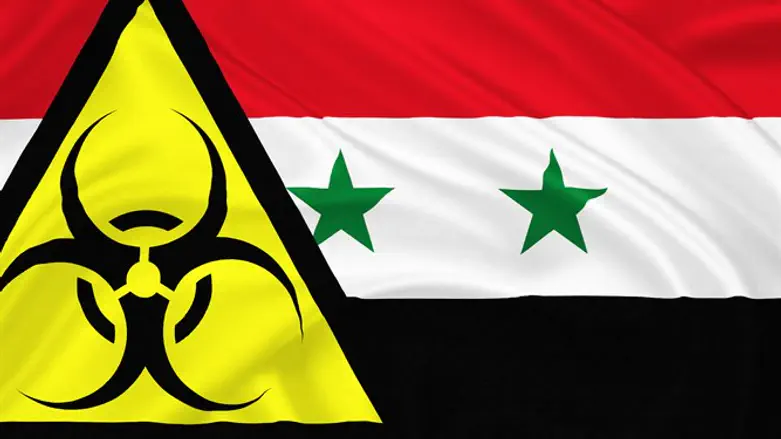
The Assad regime and pro-regime militias have been responsible for over 300 chemical attacks since the start of the Syrian Civil War, according to a report published Sunday by the Global Public Policy Institute.
According to the report, there have been 336 chemical attacks since the conflict began in 2011. 98% of the attacks were perpetrated by forces loyal to Syrian President Bashar Al Assad. 2% of the Attacks were perpetrated by the ISIS terrorist organization.
Almost 90% of the chemicals attacks used chlorine delivered by barrel or lob bombs.
The report accused the Assad regime of deliberately targeting civilian areas with chemical weapons and of avoiding the use of such weapons on strictly military targets. According to the report, the chemical attacks were meant to punish civilian populations for their support of rebel factions.
90% of the chemical attacks occurred following the regime's attack on the Damascus suburb of Ghouta. The attack, which used the deadly sarin nerve agent, resulted in the deaths of hundreds of people, with some estimates putting the death toll over 1,700.
The international condemnation which followed the Ghouta attack led the Assad regime to strike a deal under which it was to have turned over all of its remaining chemical weapons and destroy its chemical stockpiles. However, the regime has carried out hundreds of chemical attacks since then, mostly using chlorine.
The Global Public Policy Institute called on the United States and the international community to target craft which have been used as delivery systems for chemical weapons, including Syria's helicopter fleet.
"The Syrian helicopter fleet, which has played a critical role in the delivery of conventional and chemical barrel bombs, should be a primary target,” the report stated.
Last April, the US, France, and Britain carried out a strike of 100 cruise missiles against Syrian targets in response to a chemical attack by the Assad regime on the city of Douma.
